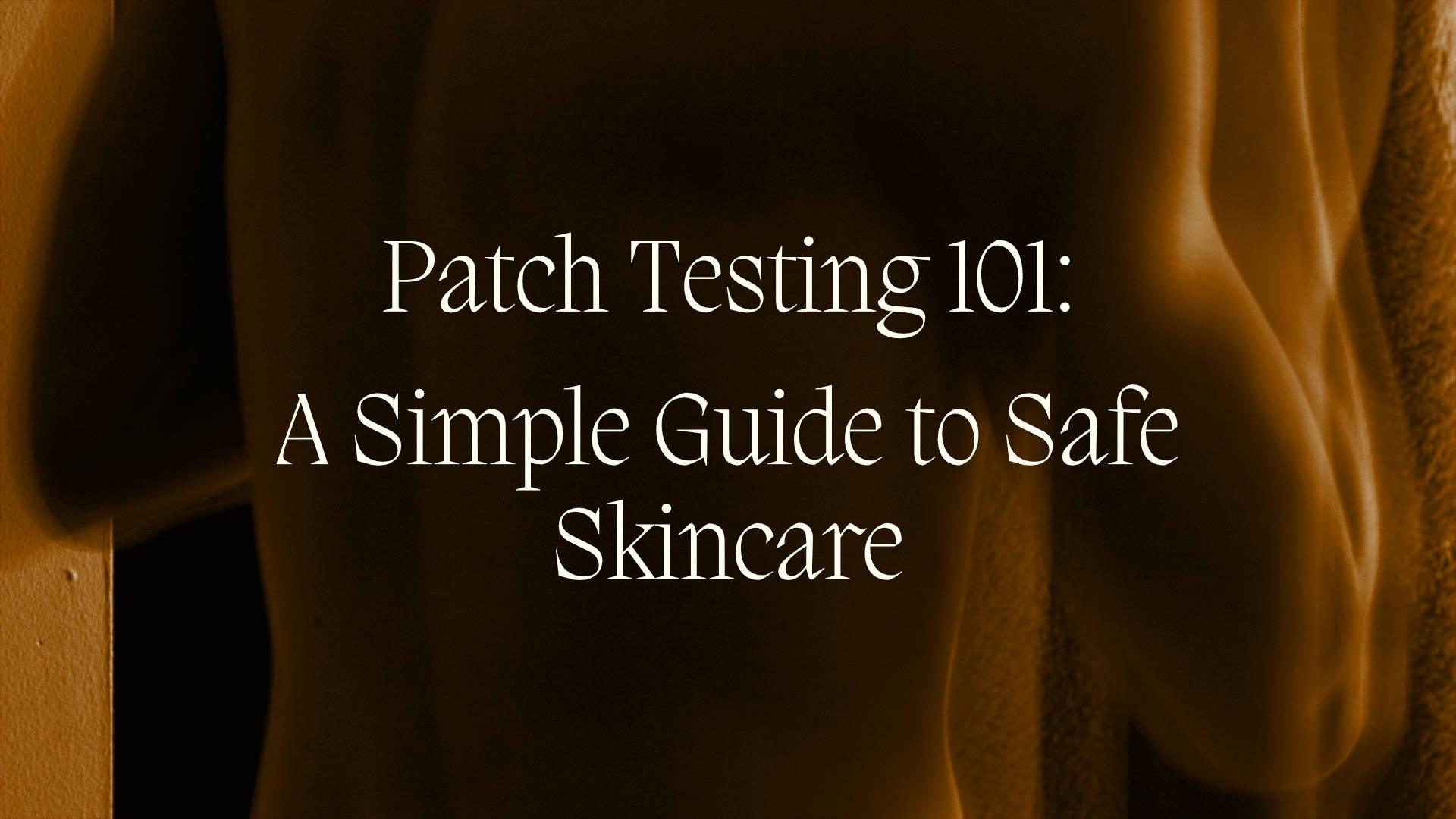Patch Testing: A Comprehensive Guide for Skincare Enthusiasts
Patch testing is a vital step in skincare, ensuring that new products do not cause adverse reactions such as irritation, allergic contact dermatitis (ACD), or clogged pores. Originating as a diagnostic tool introduced by German dermatologist Josef Jadassohn in 1895, patch testing remains the gold standard for diagnosing ACD and has been adapted by the skincare community to test product compatibility with individual skin types.
Why Patch Testing is Essential
Find Out If a Product Causes Allergies or Irritation
- Allergic reactions happen when your skin's immune system responds to something it doesn't like. This can cause redness, itching, or rashes.
- Irritation is different; it's when a product damages your skin's barrier, leading to redness or discomfort without an allergic response.
Avoid Confusion Between Purging and Breakouts
- Breakouts can occur due to irritation, which might look similar to purging (when your skin clears up after using a new product). Patch testing helps you tell them apart.
Check If a Product Clogs Pores
- While some products are labeled as non-comedogenic (meaning they shouldn't clog pores), the best way to know for sure is by testing them on your own skin.
Determine How Strong a Product Is and How Often to Use It
- For products like exfoliants or retinoids, patch testing helps you understand how potent they are and how often you can safely use them.

Understanding Your Skin Before Patch Testing
Before you start, it's helpful to know:
- What is your skin type?
- Are you prone to breakouts, sensitivity, or clogged pores?
- Which parts of your face are most sensitive or problematic?
- How long does it usually take for your skin to react to new products?
How to Patch Test Effectively
Step I: Test on Hidden Areas
- Choose a Hidden Spot: Apply the product to an area like the inner arm or behind the ear. These spots are easy to hide if you get a reaction.
- Wait and Watch: Observe the area for about 96 hours. Allergic reactions usually show up within 24 to 72 hours.
Step II: Test on Less Problematic Areas
- Select a Safe Spot: Apply the product to areas where you rarely get breakouts, like the side of your jaw or neck.
- Monitor Quickly: Watch for reactions over the next few hours to a day. Irritation can happen fast.
Step III: Test on Problematic Areas
- Identify Your Problem Spots: Apply small amounts of the product to areas prone to specific issues:
- If you're sensitive, test on areas that easily get irritated.
- If you get acne, test on areas where you usually break out.
- Observe Over Time: Check for reactions daily for about a week.
Step IV: Introduce the Product to Your Full Face
- Start Slowly: Begin using the product once or twice a week on your entire face.
- Increase Frequency: Gradually increase how often you use it, allowing your skin to adjust.

Signs of a Bad Reaction
Keep an eye out for:
- Bumps under the skin
- Itching or redness
- Scaling or peeling
- Blisters or pustules
- Breakouts
What to Do If You React
- Stop Everything: Immediately stop using all new products.
- Soothe Your Skin: Use gentle products like aloe vera gel to calm your skin.
- Reintroduce Basics: Gradually add back your trusted cleanser, moisturizer, and sunscreen.
- Avoid the Problematic Product: Don't use the product that caused the reaction again.

Customizing Your Patch Testing
Adjust this guide based on your skin:
- If your skin is resilient, you might be able to skip some steps or test for shorter periods.
- If you have sensitive skin, take your time and don't skip any steps.
Conclusion
Patch testing is a simple yet effective way to ensure that new skincare products work well with your skin. By following these steps, you can avoid unwanted reactions and find products that truly benefit your skin. Always consult a dermatologist before adding new active ingredients to your routine.
Always consult a dermatologist before incorporating active ingredients into your routine!
Learn more about our ingredient philosophy and how we pick the right ingredients that are known for their safety and efficacy.
References:
https://pmc.ncbi.nlm.nih.gov/articles/PMC10239928/
https://www.medicalnewstoday.com/articles/allergic-contact-dermatitis
https://jamanetwork.com/journals/jamadermatology/fullarticle/2775575


0 commentaire